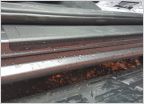-
Welcome to Tacoma World!
You are currently viewing as a guest! To get full-access, you need to register for a FREE account.
As a registered member, you’ll be able to:- Participate in all Tacoma discussion topics
- Communicate privately with other Tacoma owners from around the world
- Post your own photos in our Members Gallery
- Access all special features of the site
Cracked taillight...? [UPDATED]
Discussion in '3rd Gen. Tacomas (2016-2023)' started by brandon78lusch, Feb 28, 2020.


 Door Sill Protectors
Door Sill Protectors Shackle for front tow hook
Shackle for front tow hook Blind spot add-on mirrors
Blind spot add-on mirrors Toyota Tacoma all-weather floor mats by Baselayer - premium texture and style
Toyota Tacoma all-weather floor mats by Baselayer - premium texture and style New Wheels & Tires On Stock 2020 TRD Sport
New Wheels & Tires On Stock 2020 TRD Sport DIY - SmartStart Installation with DBALL2 Remote Start
DIY - SmartStart Installation with DBALL2 Remote Start










































































